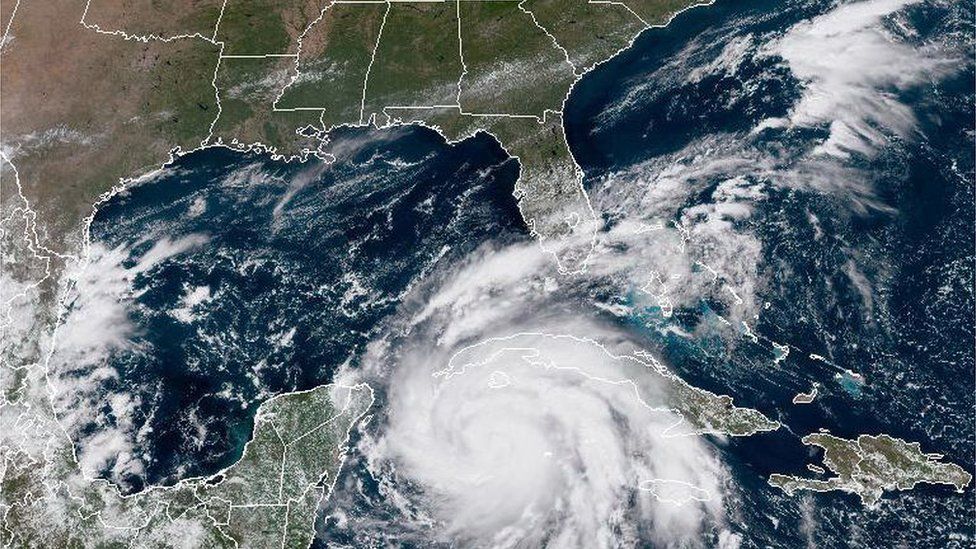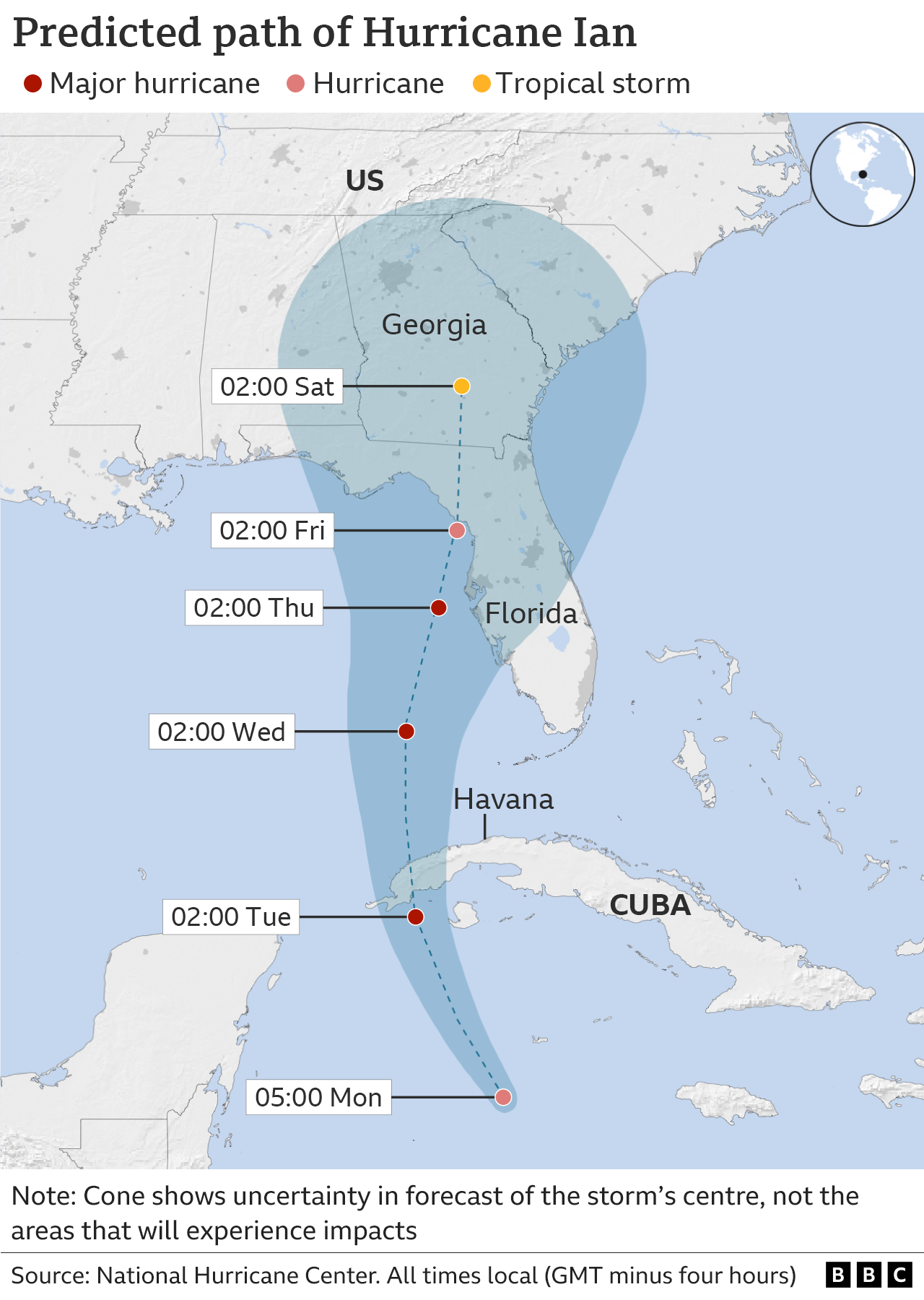By Sam Cabral,
BBC News,Florida's governor has warned the state to brace for a potential "major disaster" as category two Hurricane Ian gathers force in the Caribbean.
Strong winds began hitting Cuba's south coast on Monday night. Ian is expected to make landfall on Florida's west coast sometime on Wednesday.
The hurricane's exact path is uncertain but Governor Ron DeSantis warned of "broad impacts throughout the state".
Residents have been stocking up on food, water, medicine and fuel.
Some parts of the state have not seen a hurricane of this magnitude in about a century.
The National Hurricane Center (NHC) said it expects "rapid strengthening" from Ian over the next 48 hours as it inches north from its current location 130 west of Cuba.
"This is a really big hurricane at this point," Florida's governor said at a Monday news conference, urging residents to "remain calm", but "do what you need to be prepared".
The governor declared a state of emergency for all of Florida over the weekend and has activated 5,000 National Guard troops to assist with relief efforts.
A bulletin issued at 2200e on Monday by the NHC said that Ian could develop into a category three storm with wind speeds of 120mph or greater by the time it hits Cuba.
Tuesday classes have been cancelled in parts of the island, and evacuations are in place in a handful of western provinces, including near the country's tobacco region.
Authorities in the Cayman Islands, a British territory, are working to provide plywood, sandbags and other supplies to local residents,
"We must prepare for the worst and absolutely pray and hope for the best," Premier Wayne Panton said in a video on Sunday.
Along Florida's Tampa Bay coast, grocery store shelves were quickly cleared of basic necessities and there were long queues at gas stations.
"It's never too early to prepare," Tampa Mayor Jane Castor tweeted.
The Tampa area could receive its first direct hit from a hurricane since 1921, officials say, and may see 10ft of storm surge cause flooding along the coast.
"Please treat this storm seriously. It's the real deal," Hillsborough County Emergency Management Director Timothy Dudley said in a news conference on Monday. "This is not a drill."
Local officials in Tampa, Miami and Fort Lauderdale are distributing free sandbags to help residents protect their homes from flooding.
Meteorologists have said flash flooding is possible by Tuesday in the Florida peninsula and Florida Keys as the hurricane approaches.
The White House has also made its own emergency declaration, which will help federal and state officials co-ordinate disaster relief and assistance.
Federal officials are also pre-positioning millions of meals and litres of water in Florida and neighbouring Alabama.
President Joe Biden has postponed a planned visit to Florida on Tuesday.
The launch of Nasa's most powerful ever rocket from the Kennedy Space Center in Florida has also been delayed. The Artemis 1 rocket was rolled off its launch pad on Monday.
Forecasters have said Cuba could see up to 10in (25cm) of rain from Hurricane Ian, while Jamaica and the Cayman islands could receive between 3-6in.
The Caribbean is still reeling from the effects of Hurricane Fiona, which tore through the region last week.
Moving northward to parts of the Atlantic Canada coastline and eastern Quebec, Fiona claimed two lives, washed homes into the sea and downed power lines over the weekend.



Comments
Post a Comment